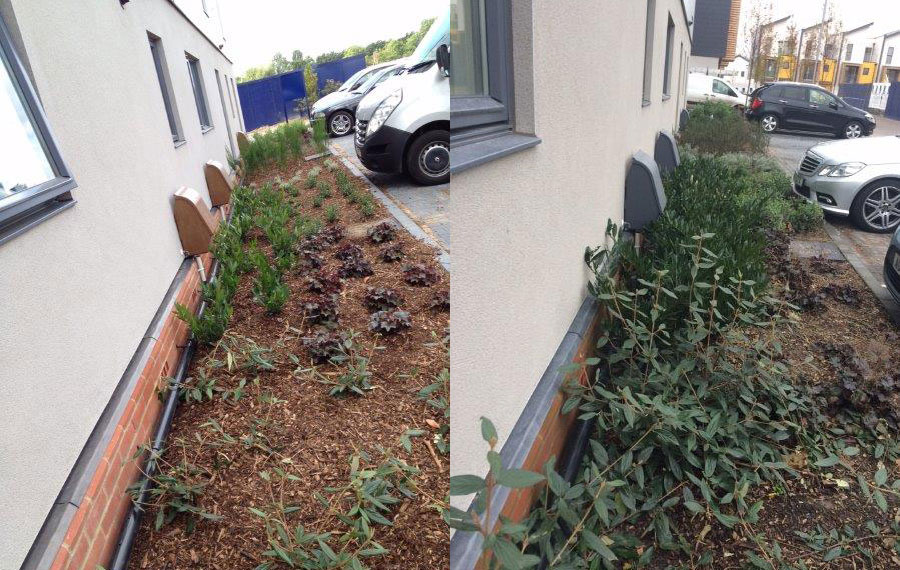THE CHALLENGE
Soft landscaping planted in amenity areas on commercial and residential sites need to be manually watered at regular intervals, especially in the early stages of plant growth. Water demand for new plants and shrubs is extremely high and irrigation is normally carried out with drinking water supplies, through hoses or sprinklers, which are often subject to restrictions in the summer months.
Often, due to insufficient watering. The plants die-off, if this happens on a commericial site, more often than not the landscapers consequently have to re-visit the site to replace plants at additional cost due to a common clause in their contract.
This irrigation pipe takes rainwater directly from an adjacent roof and either stores the water right next to where it is required, or, alternatively, distributes the rainfall accurately and evenly across the flower beds, improving maintenance costs and substantially reducing the amount of domestic drinking water used.
THE SOLUTION
Whether our product is used as a water butt or distribution/infiltration system, it comes with a number of benefits:
Water Butt Option:
- Less obtrusive than water butts
- Overflow is directly onto adjacent landscaping where it is needed
- Stored Water can be drawn off by hose or watering can for watering plants away from the building edge
Infiltration Option:
- Reduced Post-Construction Landscape Maintenance costs as less artificial watering is needed.
- Large reduction in the volume of clean tap water required for Landscape Maintenance.
- Reduced Post Construction Landscaping replacement costs as direct watering will reduce the number of dying plants.
- Reduces the volume of runoff leaving the site via underground drainage. (Benefit to Sur1 of CSH, which might otherwise require Rainwater Harvesting as a Mandatory requirement.)
- General Environmental benefits in terms of rainwater recycling.
- Infiltration of rainwater is spread around the site more evenly than Soakaways which concentrate large contributing areas to a single location.
- Infiltration directly into the soil removes the need for, and cost of, underground pipes and chamber to transport roofwater from drain pipes to a Soakaway or sewer.
- The combination of localised small areas of roof infiltrating into long strip of landscaping mean that infiltration in accordance with BRE Digest 365 is possible in subsoils of intermediate soakage potential when conventional Soakaway design would struggle to comply.
- Even in circumstances where the land drain option is required, the delay in the time for filtered rainfall to leave the site is extended greatly, thus reducing the peak flow rate from a site. (Attenuated flow.)
- Where the land drain option is used, a 100mm flexible perforated pipe can be used instead of the conventional cost of underground upvc pipes and inspection chambers.







